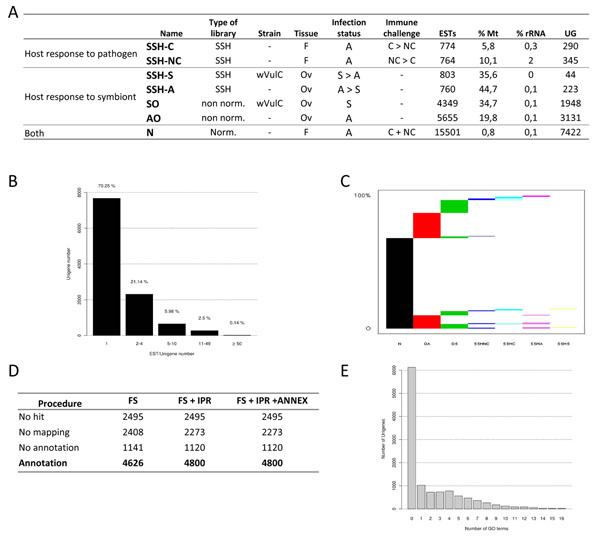Figure 1.
EST library characteristics A. Summary of the different EST libraries. Suppression Subtractive Hybridizations (SSHs) were performed with Miror Orientation Selection procedure. cDNA libraries were sequenced with or without normalization (Norm. or Non Norm. respectively). The wVulC Wolbachia strain (Celles sur Belle, France) induces feminization of genetic males and has some negative impacts in symbiotic females (see text). Immune challenge was performed through the injection of 104 Salmonella typhimurium in asymbiotic females: RNA was extracted 6h, 9h, and 15h after challenge. F = whole female tissues, Ov = ovary tissues, S = symbiotic, A = asymbiotic, C = immune challenge, NC = no immune challenge, ESTs = expressed sequence tags, Mt = mitochondrial genes, rRNA = ribosomal genes, UG = number of unigenes. B. Abundance classes of ESTs and unigenes. C. Unigenes occurrences among EST libraries. The horizontal axe represents the different EST libraries, the vertical axe represents the occurrence of unigenes within the libraries. Horizontal reading of the graph indicates the percentage of unigenes shared by several libraries. D. GO annotation results for High Scoring Pairs (HSP) coverage of 0%. GO annotation was first conducted using the Score Function (SF) of the BLAST2GO software. The GO terms selected by the annotation step were then merged with InterProScan predictions (SF + IPR). Finally, the Annex annotation was run (SF + IPR + ANNEX). E. Annotation distribution of GO terms.

